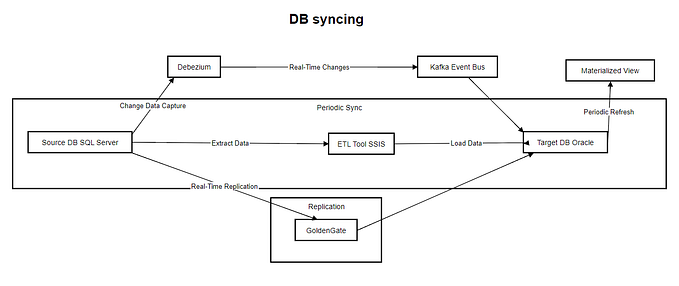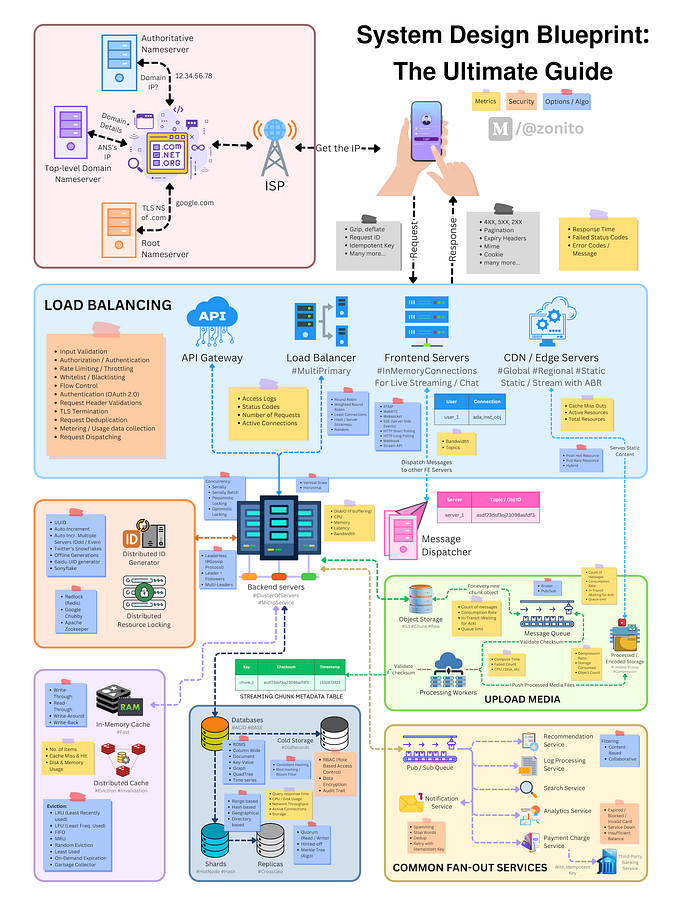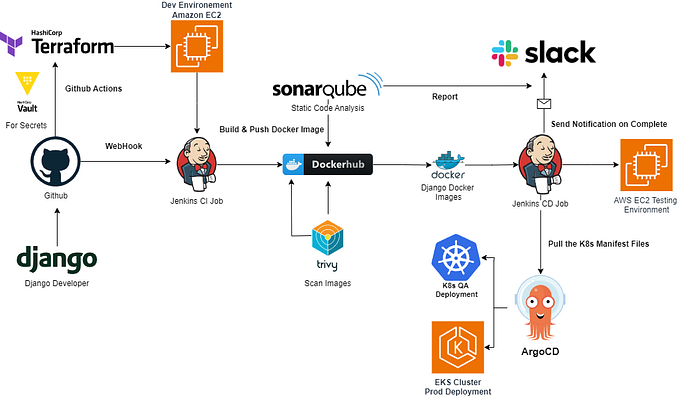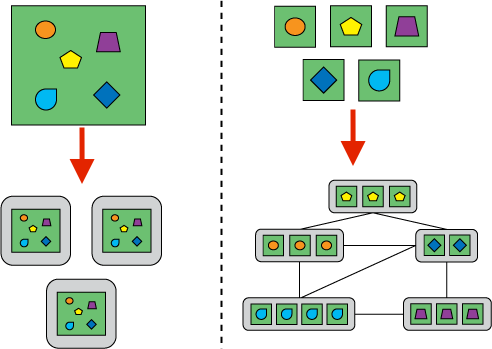Useful Cheat Sheet: 9 Key Components of a Production Microservices Application
Building and managing a microservices-based application requires various components that work together seamlessly. Here’s a quick guide to understanding the core elements of a production-level microservices architecture:

1 — API Gateway
The API Gateway serves as a single entry point for client applications. It handles routing, filtering, and load balancing requests across different microservices. This component simplifies client interactions by providing a unified interface for all services. Popular tools include Kong, Nginx, and AWS API Gateway.
2 — Service Registry
A service registry maintains information about all running services, enabling the API Gateway to discover and route requests to the appropriate service. It also helps in managing the dynamic nature of microservices where instances may start and stop frequently. Commonly used service registries include Consul, Eureka, and Zookeeper.
3 — Service Layer
Each microservice within the architecture fulfills a specific business function and can run on multiple instances for scalability. These services are often developed using modern frameworks such as Spring Boot (for Java-based services) or NestJS (for Node.js-based services). The services operate independently but communicate with one another via API calls or message brokers.
4 — Authorization Server
To secure microservices and manage access control, an authorization server is essential. This component handles authentication, authorization, and user identity management. Popular tools in this domain include Keycloak, Azure Active Directory (Azure AD), and Okta, which provide robust security features for managing user roles and permissions.
5 — Data Storage
Microservices need a robust and scalable database solution for storing application data. Traditional databases like PostgreSQL and MySQL are widely used due to their reliability and performance. Depending on the microservice’s data storage requirements, other databases like MongoDB or Cassandra may also be used for unstructured or NoSQL data needs.
6 — Distributed Caching
Caching plays a significant role in improving the performance and speed of microservices. Distributed caching solutions like Redis, Couchbase, and Memcached can store frequently accessed data, reducing the load on databases and minimizing response times for end-users.
7 — Asynchronous Communication Between Microservices
For asynchronous communication between microservices, message brokers such as Apache Kafka or RabbitMQ are essential. These tools enable reliable, scalable, and decoupled communication by passing messages through queues or topics, allowing services to operate independently without waiting for immediate responses.
8 — Metrics Visualization
Monitoring the performance of microservices is crucial in production environments. Metrics can be collected using Prometheus, and Grafana can be used to visualize these metrics, providing insights into the health, latency, and traffic of the microservices.
9 — Log Aggregation and Visualization
Effective logging helps diagnose issues and trace errors across microservices. Logs generated by services can be aggregated using tools like Logstash and stored in Elasticsearch. Kibana can then be used to visualize and analyze logs, offering a clear view of application behavior over time.
This cheat sheet outlines the most important components needed to create a scalable, reliable, and secure microservices application. Each of these elements contributes to an efficient architecture that can handle the complexities of modern production environments. By implementing these components, teams can ensure that their microservices-based systems are well-architected, maintainable, and performant.

Ready to transform your cloud infrastructure? Partner with Gart Solutions today for scalable, secure, and optimized solutions. Let’s build your future together!








